#Spain Military
Text
youtube
#youtube#militarytraining#War Games#Military Tactics#US Military#Germany Military#Spain Military#Tank Maneuvers#Military Conflict#Military Training#Tank Battle#Military Vehicles#Tank Simulation#Tank Combat#Italy Military#Armored Vehicles#Tank Firing#Tank Warfare#Military Exercise#International Military#Tanks Battle#Military Tanks#Shooting#War#Spanish Army#Italian Army#Marksmanship#Combat#Gun Range#Snipers
0 notes
Text
Spain lied about not selling weapons to Israel.
Even after October 7th, Spain has sold more than 1 million € of weapons to Israel. Norway and Finland make it possible.
In January, Spain made headlines word-wide when the government's Minister of Exteriors, José Manuel Albares (PSOE), claimed in Congress and later again in a radio interview that Spain had stopped selling weapons to Israel ever since October 7th. Israel's intensification of violence in Gaza following October 7th meant that, on top of decades of apartheid and ethnic cleansing, between October 7th and January 23rd Israel had already killed 28,000 people and forced 2 million out of their home. In this context, many people were demanding their governments stop arming and funding the genocide of the Palestinian people, and here on Tumblr and other social media sites like Twitter I think we all saw the many posts praising the Spanish government for this.
Well, it turns out it was a lie.
According to Albares, "Since October 7th there are no more weapons exportations [from Spain] to Israel". But in November alone, Spain exported weapons to Israel for 987,000€, as was published on the Spanish Government's official website dedicated to exterior commerce (Comex). A researcher from Centre Delàs (an independent centre for peace studies) found it and published it, and it has also been verified by newspapers such as elDiario.es.
This 987,000€ worth of weapons in November was not the only ammunition that Spain has sent to Israel in 2023. In 2023, Spain exported a total of 1.48 million € in war material to Israel.
All of the weapons sent in November come from the factory of Nammo Palencia (Castilla y León), a corporation that is 50% property of the Government of Norway and 50% owned by a public Finnish business. However, even if the owners are foreigners, the ammunition was sent from Spain and thus it had to be authorized by the an organism of the Spanish Government named Junta Interministerial de Defensa y Doble Uso, whose deliberations on whether a weapons exportation is accepted or denied are kept secret. The only cases where they have denied exporting weapons to Israel have been when they thought that Israel would re-sell these weapons to the Philippines.
Spain has had a close relation with Israel for years. As published by the Spanish Government, Spain has sold 20 million € of weapons to Israel between 2012 and 2022. Spain also buys weapons and military software from Israel (for example, the Spanish Intelligence Service has been using the Israeli software Pegasus to illegally spy on Catalan activists, journalists, politicians and civil society members and their relatives to attack the Catalan independence movement), and Spain has continued buying from Israel and allocating defense contracts to Israel even after the October 7th attacks. It is very difficult to track the concessions of public contracts such as buying weapons, but some contracts have been known. For example, on November 24th 2023, Spain bought 287.5 million € of missiles from Israel. This is not unusual: between 2011 and 2021, it is publicly known that Spain bought war material from Israel for at least 268 million €, but experts say that the real number could be two or three times as much.
Spain has also continued allocating concessions to Israel. For example, on December 15th 2023 Spain allocated a contract worth over 576 million € to Israel for a rocket launcher programme. On November 22nd, Spain allocated another another Israeli company to provide missiles for 237 million € at the same time as the Spanish army bought Israeli inhibitors for 1.4 million €. The very next day, November 23rd, Spain signed another military allocation to Israel for 82,600€. The following week, Spain signed yet another allocation with a different Israeli military corporation for 3.7 million €.
Spain also allows Israeli weapon manufacturing companies to produce weapons through their branches located in Spain. This way, Israeli weapons make their way to markets with which Israel doesn't have diplomatic ties but Spain does, like Saudi Arabia. And since Spain is a member of NATO, Israeli weapons produced in Spain are approved according to NATO standards and access it easily. In the same way, these Israeli weapons manufacturers also access European Union defense funds through their branches in Spain. (source).
As I said, I saw a lot of positive posts around when Albares said Spain was going to embargo, but I haven't seen any post about how they didn't do it. I also (personally) haven't seen anything on international media, and barely anything on Spanish media, which is already busy with the PSOE covid material corruption scandal. So I share this in the hope of helping put pressure on Spain to cut all ties with Israel immediately.
SHAME ON EVERYONE WHO GIVES ISRAEL THE MATERIAL AND MONEY THAT WILL BE USED TO MASSACRE THE PALESTINIAN PEOPLE. SHAME ON SPAIN, NORWAY, AND FINLAND.
#i've been meaning to post this for a few days but never manmaged to finish writing since i don't have internet at work and i barely have#time to do anything else than sleep eat and prepare work stuff when i'm home#so I'm late but this is still relevant#palestine#gaza#israel#free palestine#spain#norway#finland#españa#end genocide#bds#boycott divest sanction#free gaza#peace#anti military#💬
3K notes
·
View notes
Text





Jousting Armour and Horse from the Holy Roman Empire dated to the 16th Century on display at the Museum of the Army in Toledo, Spain
This set of armour is made up of original 16th century parts and recreated 19th century segments. The replicas are engraved in the same style as the originals to make them look the same.
Photographs taken by myself 2019
#military history#art#armour#cavalry#holy roman empire#spain#spanish#16th century#renaissance#museum of the army#toledo#barbucomedie
58 notes
·
View notes
Text


Princess Leonor, The Princess of Asturias signs the Honour Book of the University of Zaragoza, to thank them for their contribution on her formation at the General Military Academy, in Zaragoza, Spain -July 20th 2024.
📷 : Universidad de Zaragoza.
#princess leonor#princess of asturias#spanish royal family#spain#2024#july 2024#university of zaragoza#general military academy#general military academy 2024#royal children#my edit
30 notes
·
View notes
Text

Bombardier moyen Heinkel He 111 B du groupe de bombardement KG 88 de la Légion Condor – Guerre civile d'Espagne – Espagne – 1938
#Guerre civile d'espagne#guerre civile espagnole#spanish civil war#légion condor#condor legion#aviation militaire#military aviation#bombardier#bomber#bombardier moyen#medium bomber#heinkel he 111#he 111#espagne#spain#1938
38 notes
·
View notes
Text



Spanish Royal Family | The Queen of Spain and The Princess of Asturias attends the National Day Military Parade in Madrid, Spain | October 12, 2023
#royaltyedit#theroyalsandi#queen letizia#queen of spain#princess leonor#princess of asturias#leti x leo 2023#leti x leo edit#2023#spanish 2023#oct 2023#military day 2023#spanish royal family#my edit
104 notes
·
View notes
Text

Marina Ginesta, a 17-year-old communist militant during the Spanish Civil War. Hotel Colón in Barcelona, Spain. 1936
Source
26 notes
·
View notes
Text

#battleship#military#aircraft#air force#us air force#usaf#fighter jet#aviation#fighter plane#plane#us navy#spain#photography
16 notes
·
View notes
Text
Countries that are no more: Republic of Venice (697AD-1797AD)
The first in a series I hope to feature on providing high level overviews of countries that existed and were influential to history or obscure and lost to most memory in time. The first up is the Republic of Venice.
Name: Serenisma Republega de Venesia (Venetian). In English this translates to the state's official name The Most Serene Republic of Venice. Also referred to as the Venetian Republic, Republic of Venice or just Venice.
Language: The official languages were the Romance languages of Latin, Venetian & later Italian. The regional dialect of Vulgar Latin in Northeastern Italy known as Veneto was the original language of Venice. This evolved in Venetian which was attested to as a distinct language as early as the 13th century AD. Venetian became the official language and lingua franca of the everyday Venetians and across parts of the Mediterranean although Latin would still be used in official documents and religious functions. Overtime, modern Italian was spoken in Venice though the Venetian language remains technically a separate language in Italy's Veneto region and the surrounding areas to this day.
Minority languages across the republic's territory included various Romance languages such as Lombard, Friulian, Ladin, Dalmatian and non-romance languages such as Albanian, Greek & Serbo-Croatian.
Territory: The republic was centered on the city of Venice founded in the Venetian lagoon on the north end of the Adriatic Sea to the northeast coast of the Italian peninsula. It also included the surrounding regions of mainland northeast Italy in the regions of Veneto and Friuli and parts of Lombardy. This became known as the terraferma or the mainland holdings of the republic. It also possessed overseas holdings in modern day Croatia, Slovenia, Montenegro, Albania, Greece & Cyprus.
Symbols & Mottos: The main symbol of Venice was its flag which had the famed Winged Lion of St. Mark. This represented the republic's patron saint, St. Mark. Mark the Evangelist after whom the Gospel of Mark in the New Testament in the Bible is named. Mark's body and holy relics were taken by Venice and said to be housed in the Basilica di San Marco (St. Mark's Basilica) in Venice itself. Variations of this flag differed during times of peace & war. During peace the winged lion is seen holding an open book and during war flags depicted the lion with its paw upon a bible and an upright sword held in another paw.
The republic's motto in Latin was "Pax tibi Marce, evangelista meus" or in English "Peace be to you Mark, my evangelist."
Religion: Roman Catholicism was the official religion of the state but Venice did have minorities of Eastern Orthodox & Protestant (usually foreign) Christian denominations at times in its territory and it also had small populations of Jews and Muslims to be found in Greek and Albanian territories during the wars with the Ottoman Empire.
Currency: Venetian ducat and later the Venetian lira.
Population: Though population varied overtime for the republic due to a variety of factors such as war & changing territory and disease & its subsequent effects. There was rough population recorded of 2.3 million people across all of its holdings in the mid sixteenth century (circa 1550-1560). The vast majority of its population was found in the terraferma of northern Italy and the city of Venice itself with its concentrated population on the islands within the Venetian Lagoon. The Greek island of Crete and the island of (Greek speaking) Cyprus were the most populous overseas possessions of the republic's territory. The rest of the population was found its various holdings in the Balkans mostly along the Adriatic coastline.
Government: The republic followed a complex mixed model of government. Essentially it could be characterized as a mixed parliamentary constitutional republic with a mercantile oligarchy ruling over it in practice. It had no formal written constitution, and this led to a degree of evolution without exactly defined roles often in reaction to happenings in its history. The resulting government became more complex overtime as institutions became increasingly fragmented in their size, scope and duties, some almost obsolete but still retained and others not fully defined. Yet, the republic managed to function quite well for most of its history. It incorporated elements of oligarchy, monarchy & limited democracy.
It's head of state and government was known as the Doge which is akin to the term of Duke. Though this similarity of name ends there. The Doge was neither similar to a duke in the modern sense nor was it meant as a hereditary position. The doge was rather a lifetime appointment much like the Pope for the Roman Catholic Church. Furthermore, doges were elected by the ruling elite of Venice, namely its wealthy oligarchy merchant class. The doge didn't have well defined & precise powers throughout the republic's 1,100-year history. It varied from great autocracy in the early parts of the republic to increasing regulation and restriction by the late 13th century onward. Though the doge always maintained a symbolic and ceremonial role throughout the republic's history. Some doges were forcibly removed from power and post-1268 until a new doge could be elected, the republic's rule transferred to the most senior ducal counsellor with the style of "vicedoge". After a doge's death following a commission was formed to study the doge's life and review it for moral and ethical transgressions and placed judgment upon him posthumously. If the commission found the deceased doge to have transgressed, his estate could be found liable and subject to fines. The doge was given plenty of ceremonial roles such as heading the symbolic marriage of Venice to the sea by casting a marriage ring into the sea from the doge's barge (similar to a royal yacht). Additionally, the doge was treated in foreign relations akin to a prince. It's titles and styles include "My Lord the Doge", "Most Serene Prince" and "His Serenity". The doge resided in the ducal palace (Palazzo Ducale) or Doge's Palace on the lagoonfront in Venice next St. Mark's Basilica and St. Mark's Square.
While the doge remained the symbolic and nominal head of the government, the oligarchy remained supreme overall. The supreme political organ was the 480-member Great Council. This assembly elected many of the office holders within the republic (including the doge) and the various senior councils tasked with administration, passing laws and judicial oversight. The Great Council's membership post 1297 was restricted to an inheritance by members of the patrician elite of the city of Venice's most noble families recorded in the famed Golden Book. This was divided between the old houses of the republic's earliest days and newer mercantile families if their fortunes should attain them property ownership and wealth. These families usually ranged between 20-30 total. They were socially forbidden from marrying outside their class & usually intermarried for political and economic reasons. Their economic concerns were chief to the whole of the republic and most centered on Eurasian & African trade throughout the Mediterranean Sea's basin. Members of these families served in the military and eventually rose to prominent positions of administration throughout the republic.
The Great Council overtime circumscribed the doge's power by creating councils devoted to oversight of the doge or executive and administrative functions (similar to modern executive cabinets or departments) whereas the doge became more and more a ceremonial role. The also created a senate which handled daily legislation. They also created a Council of Ten set to have authority over all government action. Other bodies were formed from this Great Council and others overtime. This resulted in intricate and overlapping yet separate bodies which found themselves subject to limitations with various checks on virtually each other's power. Essentially running as committees or sub-committees with checks on another committee's powers. These bodies weren't always completely defined in their scope and overtime their complexity led to battles to limit other's power (with limited success) along with gradual obsolescence and sometimes slow grinding administration.
Military: The military of Venice consisted of a relatively small army and a powerful navy. The famed Venetian Arsenal in Venice proper was essentially a complex of armories and shipyards to build and arm Venice's navy. The arsenal in Venice has the capacity to mass produce ships and weapons in the Middle Ages, centuries before the Industrial Revolution allowed for modern mass production in economic and military applications. Venice's military was designed towards protecting it possessions both in Italy and its overseas territories. The primary concern was to secure Venice's trade routes to the rest of Europe as well as Asia & Africa. It faced opponents' overtime ranging from the Franks, the Byzantine Empire, Bulgarians to other Italian city-states, France, Austria, the Ottoman Empire and Barbary Corsairs along with European pirates in the Adriatic and Mediterranean. It played key roles as a naval transport in other powers including throughout the Crusades. It also played a key role in the infamous Fourth Crusade which culminated in the Sack of Constantinople in 1204 AD, an event which fractured the Byzantine Empire into a half-century of civil war between successor states before a weakened revival in the mid 13th century. The Byzantine Empire would linger until the 15th century when the Ottoman Empire finally conquered its last remaining portions. Many attribute this loss to in part to its weakness still resulting from that 1204 sack lead by Venice. The Venetian military would exist until the republic's end when The French Republic's Army of Italy under Napoleon Bonaparte conquered the republic, a conquest in which the Venetians surrendered without a proper fight.
Economy: Venice's economy was based largely in trade. Namely control over the salt trade. Venice was to control salt (preservative of food) production and trade throughout the Mediterranean. It also traded in commodities associated with the salt trade routes to Eurasia and Africa. These commodities could include other foodstuffs (grains, meats & cheeses), textiles & glassware among other items.
Lifespan: 697AD-1797AD. Though the exact founding of Venice itself hasn't been determined. It is traditionally said to have taken place in the year 421 AD. At a time when Roman citizens in northeast Italy were escaping waves of Germanic & Hunnic barbarian invasions that contributed to the collapse of the Western Roman Empire. The going theory is that these Romans evaded barbarian attacks by building their homes in the Venetian Lagoon by hammering wood stakes to form a foundation which sunk into the muddy shallows and petrified. Upon which they built their homes and created a cityscape marked by streets and canals interlaced. Venice remained a community of fishermen and merchants and was nominally under the control of the surviving Eastern Roman Empire (Byzantine Empire). It avoided barbarians overrunning the land but also was removed enough from Constantinople that it was relatively autonomous and became strategically important as a port. Other islands in the lagoon also banded together with Venice in a loose confederation of sorts by the 6th and 7th centuries which increased economic productivity and security for the city. The first doge was said to have been elected in 697 AD under the name Paolo Lucio Anafesto, though there is dispute about his historicity. Anafesto supposedly ruled until 717 AD. This is traditionally regarded as the foundation of the Republic of Venice.
Venice's third doge was Orso Ipato who reigned from 726-737 and he is the first undisputed historically recorded doge whose existence was confirmed. Orso also known as Ursus was known to strengthen the city's navy and army to protect it from the Lombard Germanic invaders who had overrun and ruled Italy by that time. Though nominally part of the Byzantine Empire, by 803, the Byzantine Emperors are said to have recognized Venice's de-facto independence. Though this view is disputed somewhat, it nevertheless remained virtually independent until its collapse in 1797.
Venice also partook in the slave trade of non-Christian European populations from Eastern Europe and transferred them to North Africa, selling them to the Arab and Berber (Moors) of the Islamic world.
As the 9th century progressed, the Venetian navy secured the Adriatic and various trade routes by defeating Slavic and Muslim pirates in the region. The Venetians also went onto battle the Normans who settled in southern Italy and Sicily in the 11th century.
Venice provided naval transports for Crusaders from Western Europe starting with the successful First Crusade.
The High Middle Ages (1000AD-1350AD) saw the wealth and expansion Venice increase dramatically. However, over this period Venice gradually came into mixed relations with its former ruler the Byzantine Empire. The Byzantine Empire endured corruption, civil war and foreign invasion which saw it alternate between periods of waning power and restored power. Venice provided the Byzantines with an increased naval force when needed and many trading commodities. In exchange for this, Venice was granted trading rights within Byzantine territory and a place within the "Latin Quarter" for Western Europeans in Constantinople. The Byzantine populace though calling themselves "Romans" having taken on the political & cultural institutions of the Roman Empire which lived on in the East long after the Western half's collapse, were in fact mostly Greek by ethnicity, language and culture. Their religion was the Eastern Orthodox or Greek Orthodox branch of Christianity which was often at odds with Roman Catholics of Western Europe. Resentment at the religious and cultural differences along with the economic displacement the Venetians and other Italian merchants from Genoa & Pisa had caused in Constantinople's maritime & financial sectors contributed to the 1182 "Massacre of the Latins" in which the Byzantine Greek majority of the city rioted and slaughtered much of the 60,000 mostly Italian Catholics living within the city. Thousands were also sold into slavery to the Anatolian Seljuk Turks.
This event lingered in Venice's memory as its trade in the city was reduced for awhile. Though trade resumed between the Byzantines and the West again shortly thereafter, the event soured the perception of the Greeks to Western Europeans. This along with a subsequent power struggle for the throne of the Eastern Roman Emperor fell into Venice & Western Crusader's hands in 1202. Looking to originally ferry Western Crusaders to the Levant against the Islamic Ayyubid Sultanate of Egypt & Syria. Events transpired that devolved into Venice conspiring under its doge Enrico Dandalo along with other Western leaders and a Byzantine claimant to the throne that resulted in the first successful sacking of Constantinople in 1204. The city was ransacked, some Greek citizens murdered by the Crusaders & classical works of art destroyed or looted (most famously the four bronze horses of St. Marks in Venice) and politically, the Byzantine Empire would be temporarily fractured between competing Greek dynasties while the Crusaders along with Venice created the short-lived Latin Empire, which controlled Constantinople and its environs while Venice also acquired Greek territories which it was to hold for centuries. Venice also came into conflict with the Second Bulgarian Empire at this time as its support of the Latin Empire of Constantinople encroached on the Bulgarian's land. Eventually by the mid 13th century the Latin Empire (never fully stable) collapsed, and the Byzantine Empire was restored until the mid-15th century but forever weakened as a result of the 1204 sacking of its capital.
Venice reached trade deals with the Mongol Empire in 1221. As the century wore on, it also engaged its rival in Western Italy Genoa in some warfare.
The 14th century is generally regarded as Venice at its peak as it faced down Genoa in a number of battles and came to be the most dominant trading power in the Mediterranean, though it was impacted by the Black Death plague. Nevertheless, into the 15th and even 16th centuries, it partook in a number of wars which saw it gain territory on the Italian mainland, establishing its terraferma domain.
By the 16th late 15th and into the 16th century new threats had emerged such as the Turkish Ottoman Empire. The Ottoman capture of Constantinople in 1453 is seen as the end of the Middle Ages as the last political vestiges of the Roman Empire vanished from the world stage. However, a number of Byzantine Greeks escaped on Italian ships during the conquest of the city and others escaped Greece in subsequent years. These refugees brought with them artistic and cultural heritages that reemphasized the classical forms of Ancient Greece and Rome and lead to the Italian Rennaisance in art & other forms of culture. Ideas which emphasized humanism and spread to elsewhere in Europe overtime.
While there was a cultural flourishing in Venice and elsewhere due to the Rennaisance. There was also the first signs of economic and political decline as well from the 16th century onwards. The Ottoman dominance in the Eastern Mediterranean meant the traditional trade routes to the East were cut off by an often-hostile Muslim power. Additionally, other maritime powers in the West namely Spain & Portugal had recently begun exploring the continents of South & North America and in time France, England & the Netherlands would join in them. This decline in Eastern trade and the newfound trade routes dominated by other European states in the Americas and Asia (by way of rounding Africa) would render trade with Venice gradually obsolete. Venice would still maintain what trade it could in the Mediterranean, but it also focused on production and placed increasing importance on its Italian mainland possessions rather than just its declining position overseas in Greek territories, including the loss of Cyprus to the Ottomans in 1571. Though the Venetian navy with other Christian powers won the notable naval victory against the Ottomans in 1570 at Lepanto.
It was also involved in the Italian Wars between various rival city states and the power struggle between the Papacy, France and the Hapsburg realms of the Holy Roman Empire and Spain.
Other factors that impacted the declining trade in the 17th century included an inability to keep up in the textile trade elsewhere in Europe, closure of the spice trade to all but the Spanish, Dutch, Portuguese, French and English and the Thirty Years War (1618-1648) which impacted Venice's trade partners.
Ongoing wars including a 21-year siege of Crete by the Ottomans saw further losses. Although Venice partook in the Holy League headed by the Holy Roman Empire (under Hapsburg Austria) which saw some minor temporary gains from the Ottomans in southern Greece before losing them again in the early 18th century.
War and loss of overseas territories along with a stagnant economy was slightly offset by a somewhat strong position in northern Italy. Nevertheless, its maritime fleet was reduced to a mere shadow of its former glory and it found itself sandwiched still between Austria and France. Over the rest of the 18th century, economic stagnation and social stratification remained prevalent while Venice remained in a quiet peace. However, the French Revolution reignited war in Italy and while Venice remained neutral, it would soon get caught up in events.
The Austrians and the Piedmontese (Italian) allies were beaten by the French Republic's Army of Italy headed by an up-and-coming general named Napoleon Bonaparte. Bonaparte and the French army crossed the borders of northern Italy into Venetian neutral territory to pursue the Austrians. Eventually half of Venice's territory was occupied by France and the remainder of the mainland was occupied by Austria. By secret treaty the French and Austrians were to divide the territory between themselves (Venice was consulted in the matter). Bonaparte gave orders to Venetian doge Ludovico Manin to surrender the city to French occupation to which he abdicated his power. The republic's Major Council met one last time to officially declare an end to republic on May 12th, 1797, after 1,100 years. Venice was placed under a provisional government and ironically the French looted Venice stripping it of artworks to grace the Louvre Museum in Paris along with the Arc d'Triomphe, taking the famed four bronze horses of St. Mark's to adorn the triumphal arch in Paris, the very same horses Venice had confiscated from Constantinople in 1204. It was a symbolic end to the republic, the irony of which did not escape commentators at the time. Following Napoleonic France's final defeat in 1815 the horses were returned to Venice and St. Mark's where they remain today. Venice itself was given over to the Austrian Empire.
The Republic of Venice has a historical legacy in terms of its economic accomplishments through control of trade and its innovative mass production of ships, armaments & trade commodities. It also holds a political legacy worthy of study given it was a unique and enduring polity for 1,100 years. One that maintained a complex and at times chaotic form of government that still managed to function and endure for centuries.
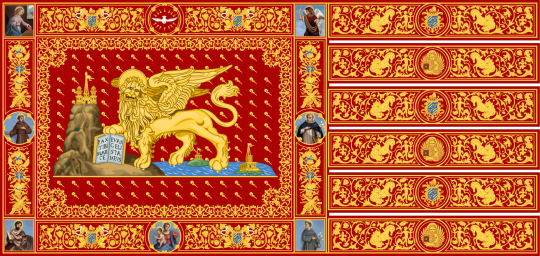
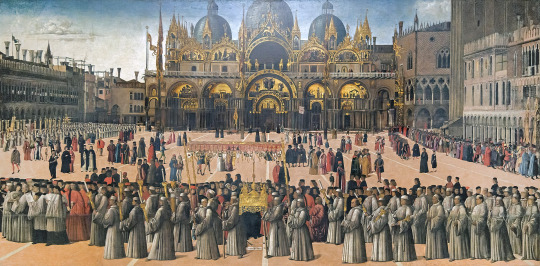
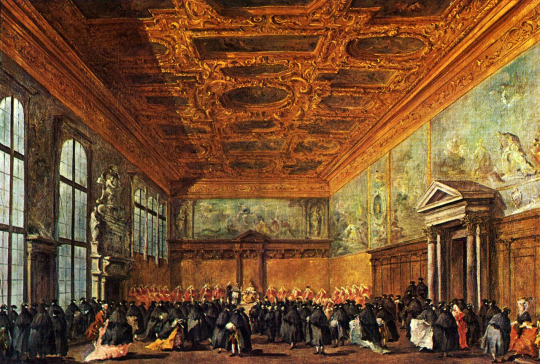

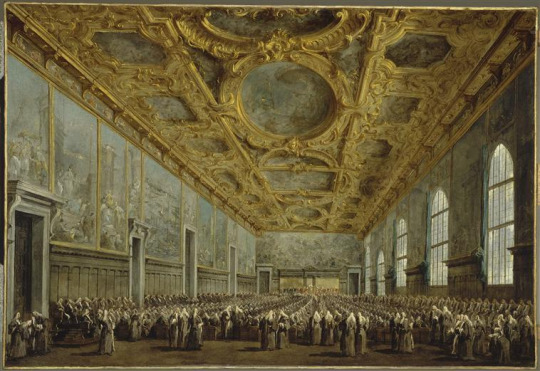
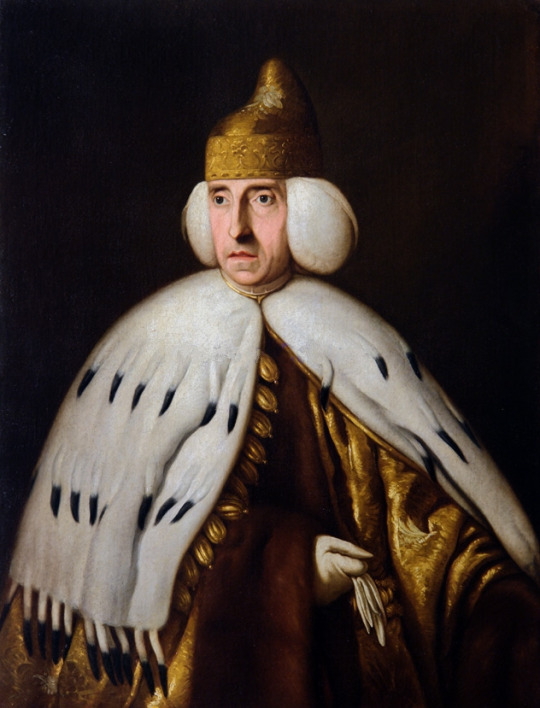
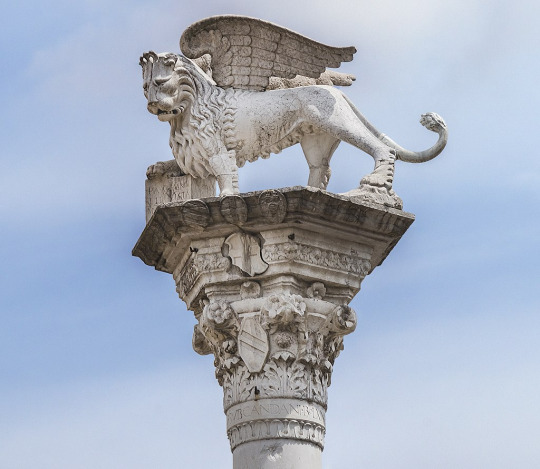

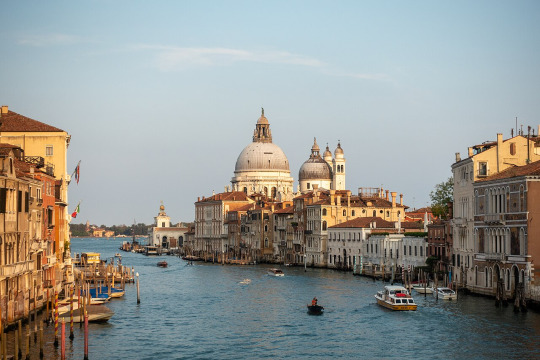

#military history#middle ages#venice#venetian republic#italy#politics#political history#trade#economics#governance#commerce#ottoman empire#spain#byzantine empire#napoleon#doge#republic
73 notes
·
View notes
Text

LIDMF AI + PHOTOSHOP
"Hasta los niños de derechas quieren un Action Xanxe para reyes"
#lol#humor#xd#risas#funny pics#lolz#funny#terror#horror#lmao#psoe#madrid#european union#presidente#elecciones#pedro sánchez#presidente españa#amnistía#catalonia#catalunya#spain#puigdemont#exilio#action man#figuras de acción#he man#motu#military#ejército#ejército español
44 notes
·
View notes
Photo
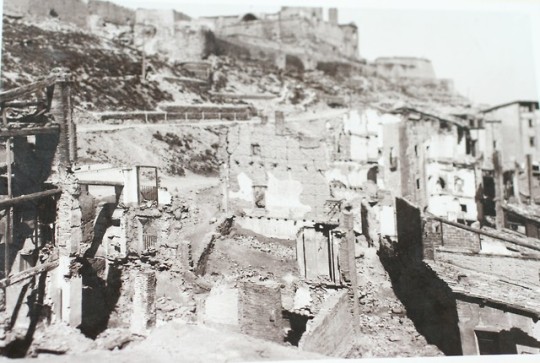
El Canyeret neighbourhood in the city of Lleida (capital city of Ponent, Catalonia) devastated after being bombed by Mussolini’s Italian fascist aviation, who was helping Franco and his fascist side in the Spanish Civil War.
Photo source: Arxiu Comarcal del Segrià.
Lleida was bombed many times by the fascist air-force in the Spanish Civil War, most heavily during the days known as “the Battle of Lleida”, between March 27th and April 3rd 1938, which ended in a victory of the fascist side. Lleida was not a big city nor very strategically important -the fascists’ aim was not factories or weapons, but civilians. Lleida’s importance was as a symbol: the rest of Catalonia still resisted as an antifascist stronghold, thanks to the militia organizations that many civilians had joined; but Lleida, as Catalonia’s Westernmost city (and thus the one closest to Spain where Franco’s army already controlled most territory), was the first city in Catalonia that was occupied by the fascist troops. (Remember that one of the main pillars of Spanish fascism are Catalanophobia and Spanish supremacy, and hatred of leftists and atheists, who were also identified with Catalonia because workers’ leftist movements were very strong here.)
The alliance between the Italian aviation, Franco’s Spanish troops and Moroccan troops occupied Lleida for the fascists, and most of the city’s population was either killed or fled as refugees to other parts of Catalonia still under control of the Republic. Out of the 38,000 inhabitants that the city had before the Battle of Lleida, less than 2,000 were left in the city on the day that the fascists considered they had bombed it enough and occupied it by land.
As soon as the fascists took control of the city, they went to erase the official registres of the victims of war, trying to erase responsibility for their massacre. They went to the Civil Registre to take the books of deaths, where the names and dates of the people who died in the city showed how many had been killed by the fascist bombs. The fascists always tried to obfuscate their crimes, they never had any honour even to face their own deeds.
By the way, the neighbourhood shown in the photo (El Canyeret) was home to the descendants of the families that Spanish troops had already destroyed 200 years ago. When Castilla (Spain) first occupied Catalonia, in the year 1714 as the end of the War of the Spanish Succession, the Spanish King Philip V militarized Catalonia, destroying whole neighbourhoods and even whole cities. In the main important cities, including Lleida, the Spanish government destroyed neighbourhoods and built military citadels on its place, that had the cannons always pointing at the population. In Lleida, people were expelled from the slopes of the Seu Vella hill, and the newly-homeless families built shanty towns further down. This was the creation of El Canyeret.
#lleida#catalunya#història#guerra civil#spanish civil war#history#1930s#1930s history#military history#1930s photography#20th century#european history#war history#spain#spanish history#revolutionary catalonia#war of the spanish succession#1714
25 notes
·
View notes
Text
Leonor Week 2023
DAY TWO: FAVORITE APPEARANCE





Leonor swears allegiance to the flag at Zaragoza Military Academy in Spain on 7th of October, 2023, as she officially begins three years of her military training.
@leonorandsofia
#princess leonor#crown princess leonor#leonor of spain#leonor week 2023#day two leonor week 2023#spanish monarchy#spanish royal family#house of bourbon#srf#favorite appearance#princesa de asturias#swearing to the flag#military#military training#princess leonor's military training#leonorandsofia
40 notes
·
View notes
Note
Kaixo! During the Franco years, I think there was mandatory military service for men, right? If so given Franco's policies regarding Basques and other minorities, was there speficic clothing Basques had to wear to show they were not Spaniards? Or were there no such restrictions?
Kaixo anon!
The mandatory military service for men was established - just like many terrible things we still suffer today - with the Bourbon dynasty (late 18th century).
Basque men were forced to the service from 1876, when our old laws were repealed.
There was no specific clothing for Basques - there are few things as homogenizing as the army - but things usually were a bit harder for them. Many of them were Basque monolingual, which resulted in mockery and hazing by their comrades, and punishments and beatings by their superiors. They had to learn Spanish the hard way, and as fast as they could.
Besides, the military service in Spain favored the rich, meaning that if the soldier was at uni, he would spend less time at the army. Only wealthy families could afford college during Franco's regime.
This three factors - the fact that Basques had had historically no obligation of serving the Spanish army since forever until the late 19th century, the abuse they endured for not knowing Spanish, and the military service being just for young men from the working class - led to a huge Objector movement in Hegoalde.
Before Franco died, some young men started refusing the military service as something against their conscience, risking themselves and their families to prison. They would hide in a neighbor's house when the army came to forcefully take them, even. It was a non-submissive movement, a way to fight against the dictatorship, that was huge in Hegoalde, as I mentioned. You can read a post about it here.
#euskal herria#basque country#pays basque#pais vasco#euskadi#spain#history#military mandatory service#anons
19 notes
·
View notes
Text


Mail Shirt of the Viceroyalty of New Spain from Mexico dated to the 16th Century on display at the National History Museum in Mexico City, Mexico
Photographs taken by myself 2024
#military history#armour#fashion#16th century#renaissance#new spain#mexico#mexican#national history museum#mexico city#barbucomedie
15 notes
·
View notes
Text

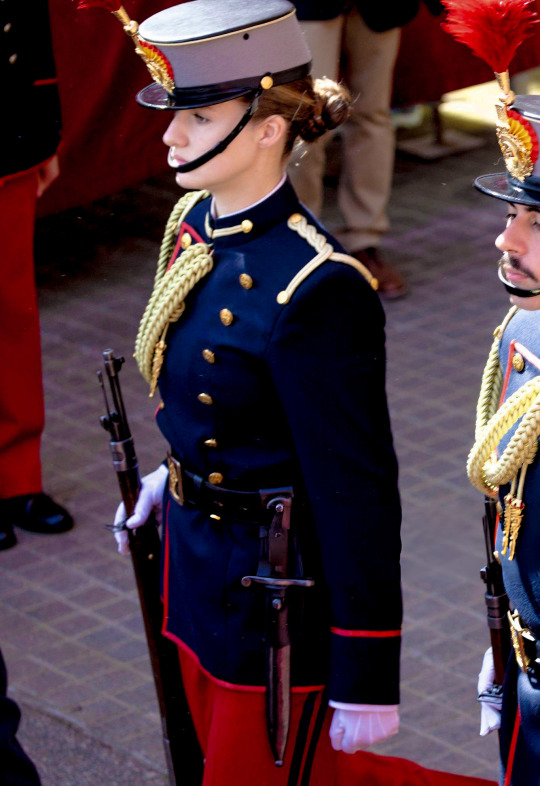
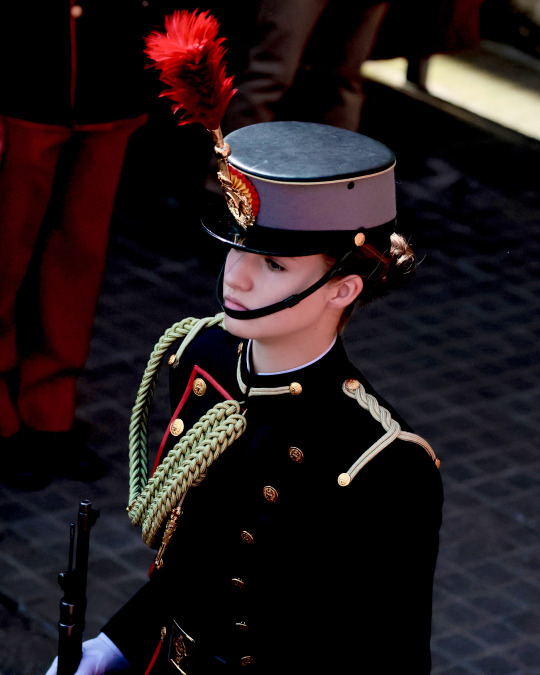
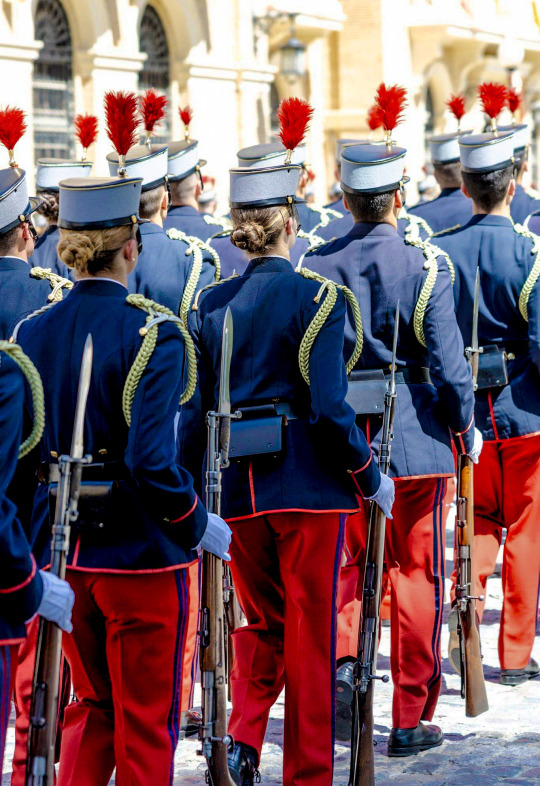
Princess Leonor, The Princess of Asturias takes part in the 40th anniversary of the swearing in of King Felipe VI in the Spanish Army, at the General Military Academy of Zaragoza in Zaragoza, Spain -May 4th 2024.
#princess leonor#princess of asturias#spanish royal family#spain#2024#may 2024#general military academy#general military academy 2024#40th anniversary of the swearing in of king felipe vi#royal children#my edit
40 notes
·
View notes